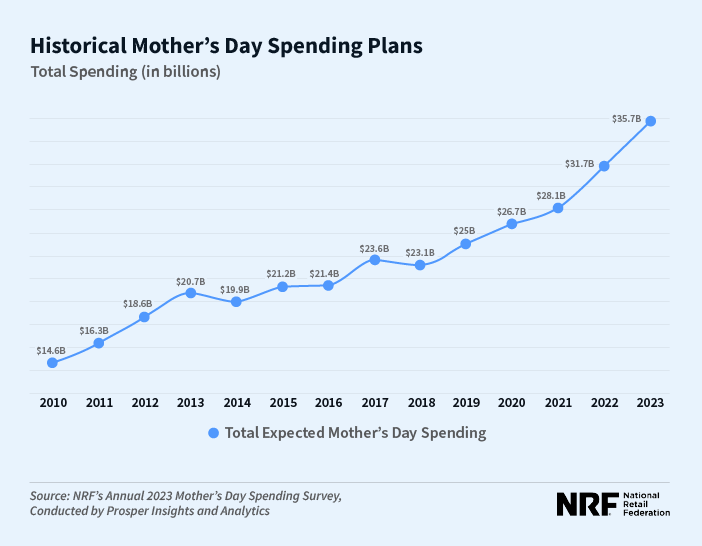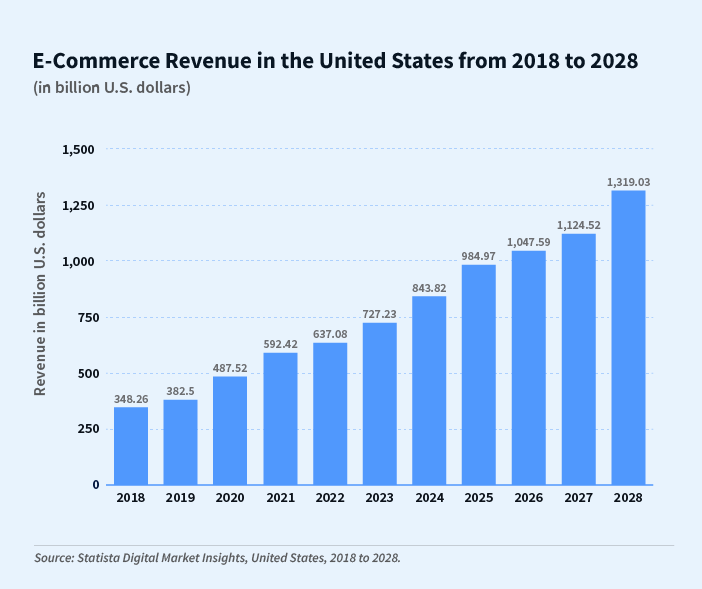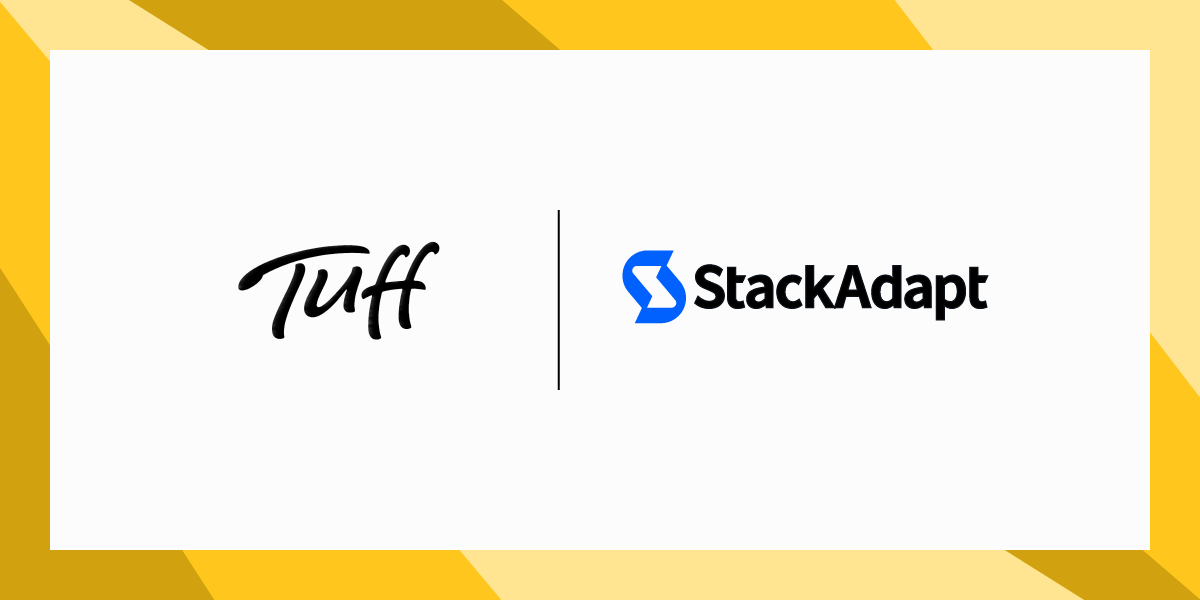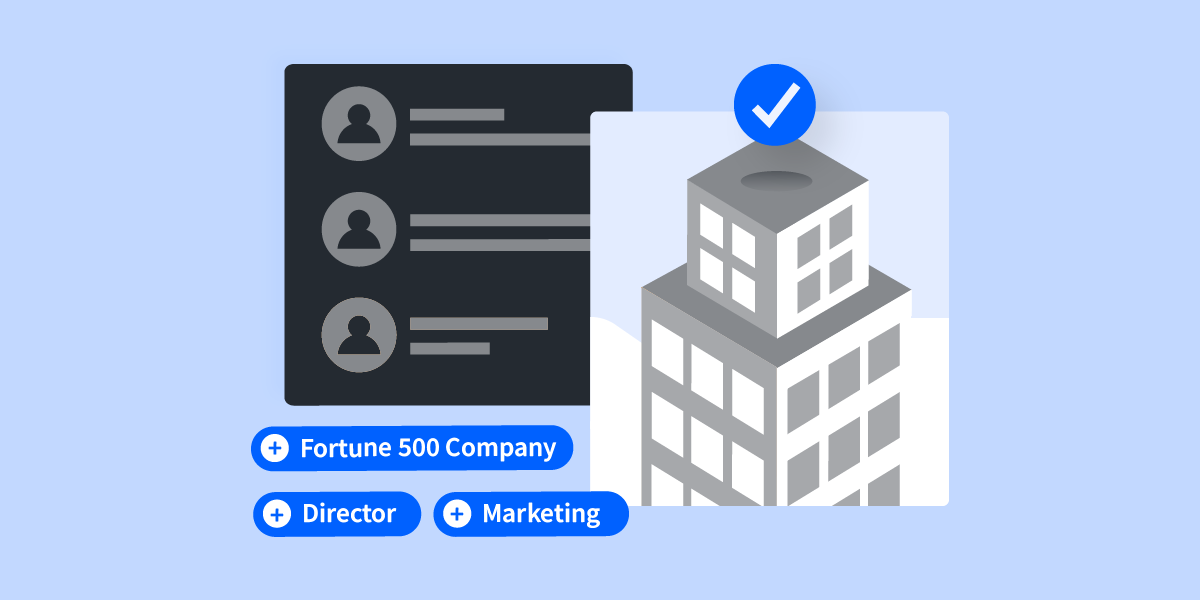Mother’s Day, which is sometimes called Mothering Sunday in the UK, recognizes mothers, motherhood, and maternal bonds in general. For millions of maternal figures and caregivers across the world, it’s time for breakfast in bed, family gatherings, gifts, bouquets of flowers, and crayon scribbled I-Love-Yous.
As we approach Mother’s Day, here are a few things you need to know about consumer behaviour. Read on to learn important stats about consumers who are shopping for this annual occasion, and how you can leverage a digital strategy to reach them.
Who is Shopping for Mother’s Day
We dug into the data in the US, UK, and Australia, so you don’t have to.
Mother’s Day Shoppers in the US
In 2023, 84% of Americans planned to celebrate Mother’s Day, and consumers planned on spending a record $35.7 billion USD on the occasion. The amount of spending has increased considerably over recent years. In 2023, consumers planned to spend $28 more on Mother’s Day purchases, and were expected to spend a record average of $274.02.

Unsurprisingly, the top three categories for spending were flowers, greeting cards, and special outings. While most consumers shopped online last year, people are returning to stores as a shopping destination this year.
So, what do you get mom to make the day extra special? Almost 31% plan to take mom out to brunch, dinner, or other special outing. Meanwhile, almost half (46%) plan to gift a product subscription box, like coffee or clothes.
While inflation is a top issue for consumers, making mom feel special remains a top priority. Rather than passing on a gift, consumers will take advantage of promotions (44%) or cutting back in other areas (34%), so mom feels special on her day.
Mothers Day Shoppers in the UK
After record breaking Mother’s Day sales in the UK in 2022, retail spending in 2023 was projected to decline by 14% down to £1.28 billion. In 2022, spending on Mother’s Day amounted to £1.49 billion.
Shoppers in the UK plan to buy the most popular gifts of cards and flowers, but are planning to cut back on beauty products (down 24%), chocolates (down 12%), and eating out at restaurants (down 13%). Of those celebrating Mother’s Day, 73% plan on having a lovely dinner at home.
Mothers Day Shoppers in Australia
Australians are set to put aside their cost of living woes and spoil their mom on her special day. According to research from the Australian Retailers Association in collaboration with Roy Morgan, Aussies are expected to spend an extra $166 million AUD from 2022 on Mother’s Day.
Those shopping for mom are planning on spending an average of $92, up from $80 in 2022, on popular gifts like flowers, alcohol, food, and gift cards. Others are planning on celebrating the occasion with a meal at a restaurant (19%), while another 38% plan on splashing out on a family feast at home.
Reach Mother’s Day Shoppers Where They Are
One major shift in consumer behaviour over recent years has been the adoption of e-commerce.
Revenue from retail e-commerce in the US was estimated at roughly $905 billion USD in 2022. The Statista Digital Market Insights report shows that by 2028, online shopping revenue in the US will exceed $1.3 trillion USD.

The UK has also seen growing adoption of e-commerce. According to eMarketer, annual e-commerce sales growth will hover around 4% through 2026 as shoppers return to in-store shopping and cut non-essential spending due to high inflation. The UK now has the most advanced e-commerce market in Europe. By 2025, the country is expected to have 68.8 million e-commerce users—leaving only a minority of the population as non-digital buyers.
While in-store shopping still has its place, the shift to e-commerce is here to stay. Consumers have recognized the benefits of online shopping—like quick delivery times, easy returns, and lots of payment options, like buy now, pay later. And in recent years, those benefits have grown as brands adapt their offerings to make online purchasing as frictionless as possible.
The rise of e-commerce has also shifted how consumers discover new products. Many turn to the internet to look for brands, services, and products that they haven’t encountered before. These shifts in consumer behaviour mean that it’s more important than ever to be where consumers are: on digital marketing channels.
Leverage a Multi-Channel Strategy
With multi-channel targeting, you’re able to reach users across different platforms and channels. You can run a campaign across two channels, like display and programmatic audio, or across more including video and connected TV (CTV). This strategy helps you to gain a larger reach by capturing users who are only on some channels.
Using a mix of complementary channels increases the percentage of the total target audience that you can reach, and it helps you to craft a brand story throughout the entire consumer journey. The goal is to make sure you’ve created a cohesive message across all of the included channels.
Then, you can leverage a retargeting strategy to deliver online ads to people based on their previous intent-based actions on the web. This is an important tactic for re-engaging users who have shown interest in your brand, and it helps to move them down the funnel toward a conversion. Through cross-channel retargeting, you can increase the likelihood that your messaging reaches your audience repeatedly.
Capture Shoppers’ Attention with Contextual Advertising
Today’s contextual advertising uses machine learning and artificial intelligence (AI). This technology has made contextual advertising more effective than ever before. Modern contextual targeting is multi-channel and scalable, making it a reliable means for reaching your audience.
Contextual advertising targets ads based on the environment in which the ad appears. Thanks to algorithms, ads are placed based on keywords, website content, and other metadata. This way, the ads are shown to users based on the content they are consuming at that moment in time. The benefit of this is that you’re able to reach users when they are in a receptive frame of mind.
For example, a restaurant brand could include phrases such as “activities with mom”, “Mother’s Day”, “brunch spots”, or “best restaurants” as target phrases in a contextual advertising campaign. This way, their ads would appear alongside articles that cover topics like “Activities for Mother’s Day.”
Measure the Impact of Your Campaigns
Tracking the impact of your campaigns both online and offline is crucial because it enables you to measure the success of your efforts, and make in-flight adjustments. To measure the impact of your campaigns, make sure your programmatic platform offers a solution for tracking measurement and attribution.
By monitoring performance, you can figure out which touch points in your marketing funnel are generating the most value, and use that data to make informed budgetary decisions that will help to scale the profitability of your digital campaigns.
You can also consider leveraging a brand lift study for your Mother’s Day campaign. A brand lift study measures the impact of your campaigns across programmatic channels. It helps to provide a picture of the consumer sentiment and brand affinity of people who have been exposed to your media.
You can leverage a brand lift study to measure the impact of upper funnel campaigns on your consumers’ perception of your brand, but it’s also effective when it comes to mid to lower funnel campaigns, for measuring consideration or purchase intent.
Reach Your Audience Online this Mother’s Day
Mum’s no longer the word! Knowing these insights about Mother’s Day consumer behaviour will help you prepare your marketing strategy for this annual occasion. By leveraging a well informed digital strategy, you can reach shoppers who are ready to celebrate not just their moms, but wives, grandmothers, and other caregivers!
Want to run exceptional Mother’s Day programmatic campaigns? Request a demo to learn more about StackAdapt.





